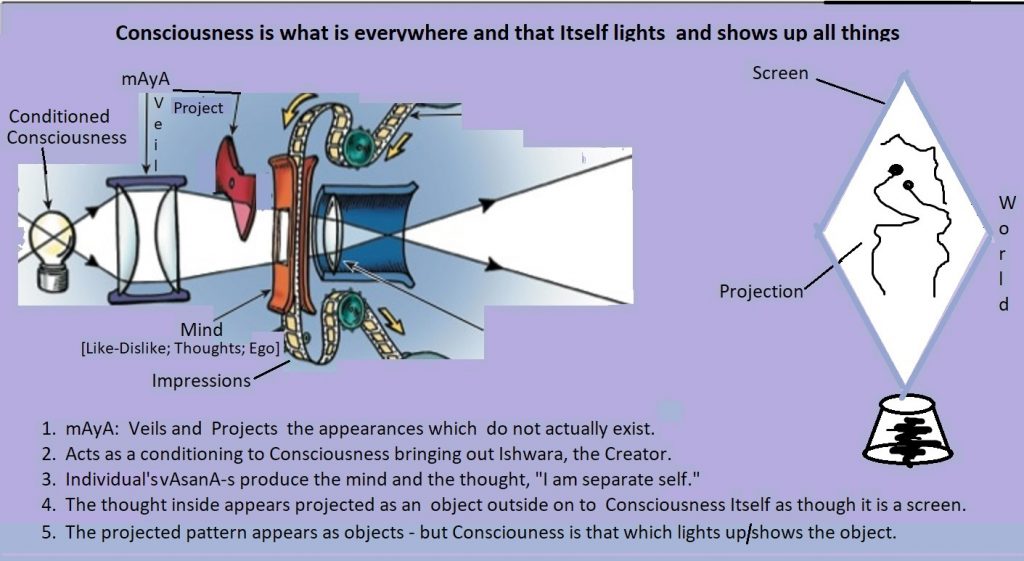The uncompromising position of Advaita Vedanta is that “Nothing is ever born” as Gaudapada tells us in his mANDUkya kArikA (verse) at 3.48 and repeats it for emphasis at 4.71. As many as four Upanishads wrap up the Absolute Reality from the Advaita viewpoint in the following verse which appears also in Gaudapada’s kArikA and Shankara’s vivekaCUDAmaNi :
न निरोधो न चोत्पत्तिर्न बद्धो न च साधकः ।
न मुमुक्षुर्न वै मुक्त इत्येषा परमार्थता ॥ — 10, amRitabindu upanishad; 2.31, Atma upanishad, 11, avadhUta upanishad; 5.13, tripuratApini upanishad; 2.32, Gaudapada kArikA; 575,vivekaCUDAmaNi .
[Meaning: There is neither Dissolution nor Creation. There is neither bondage nor any seeker for freedom. There is neither any one wishing for salvation nor any one who achieved it. This is the absolute Truth.] Continue reading

